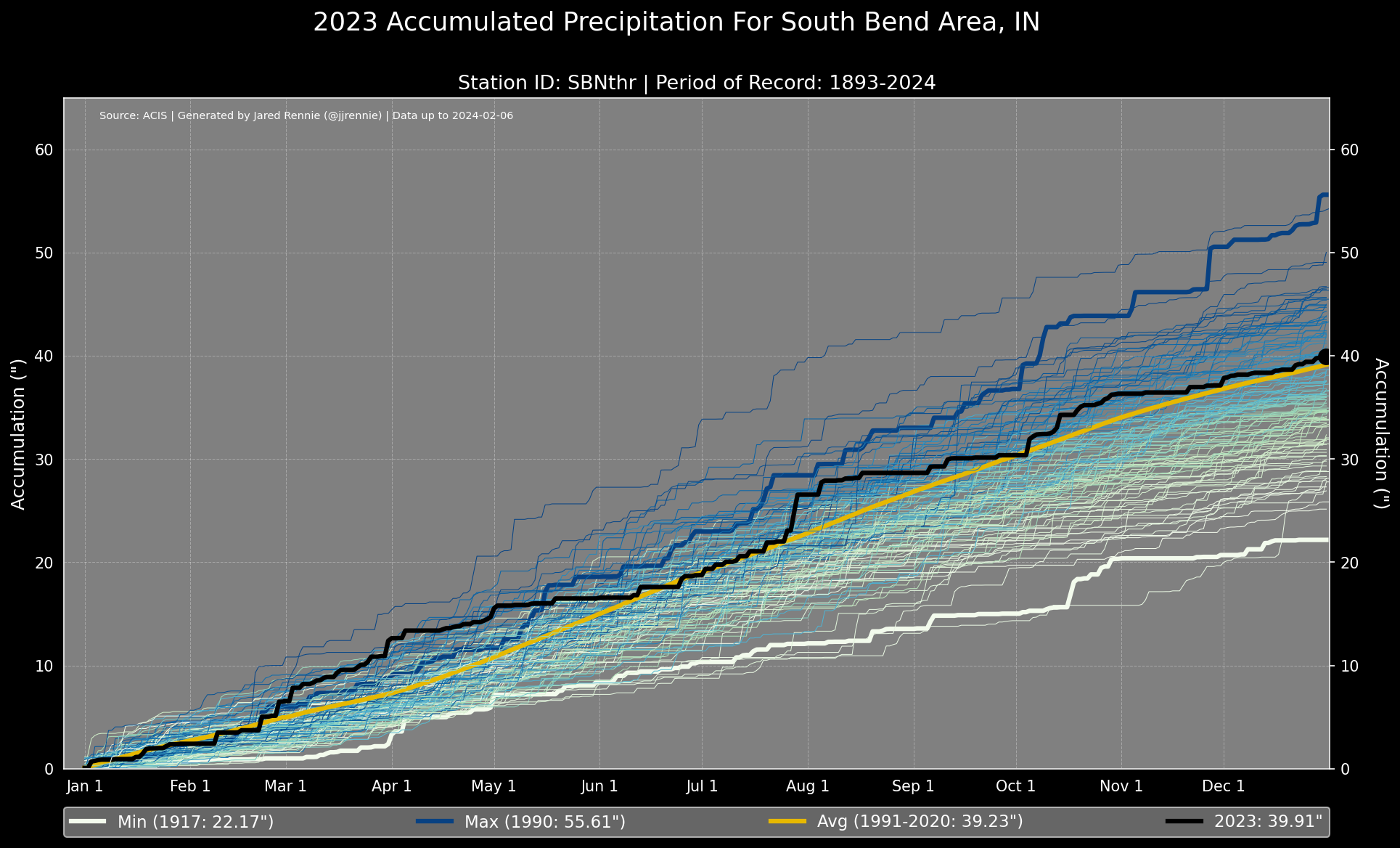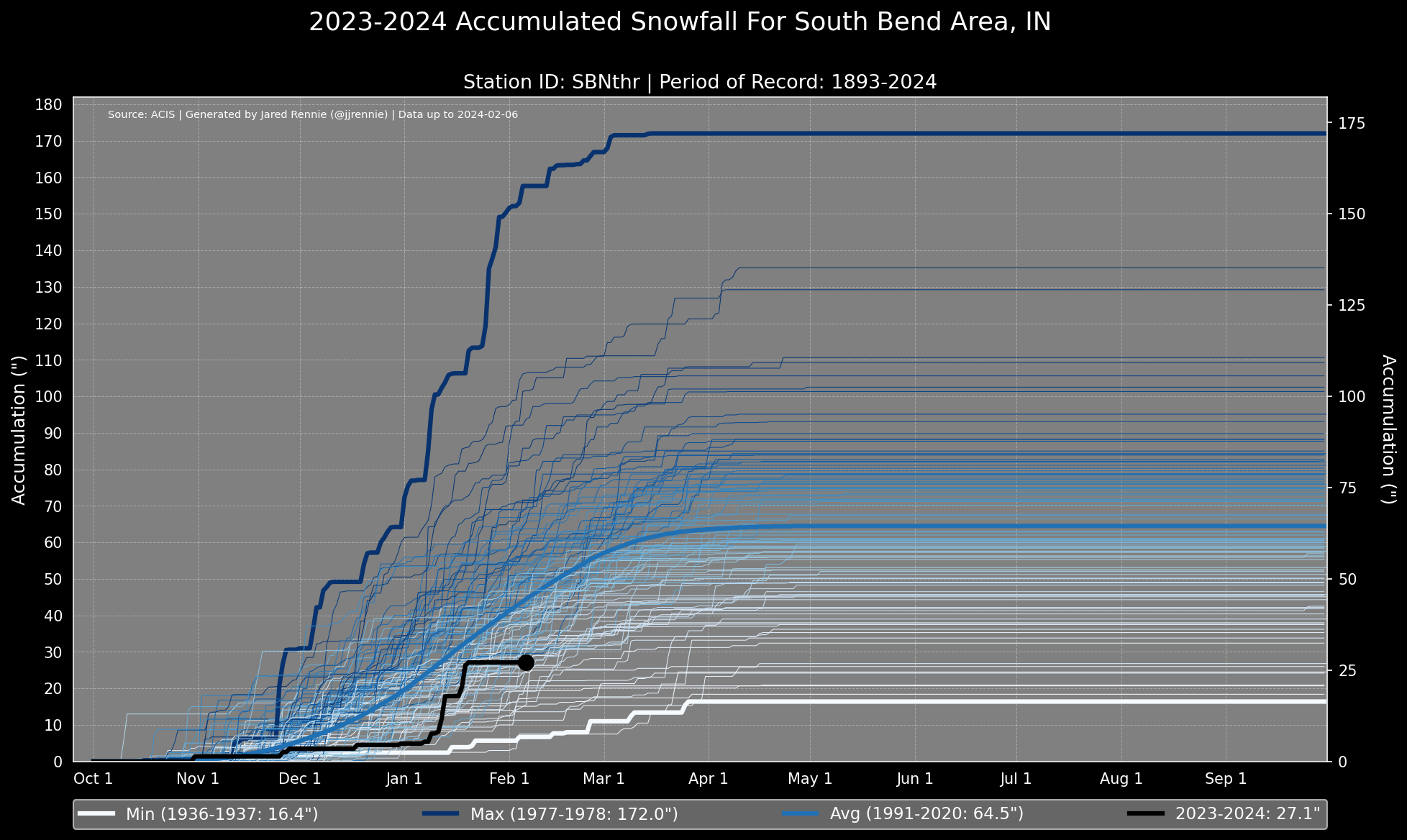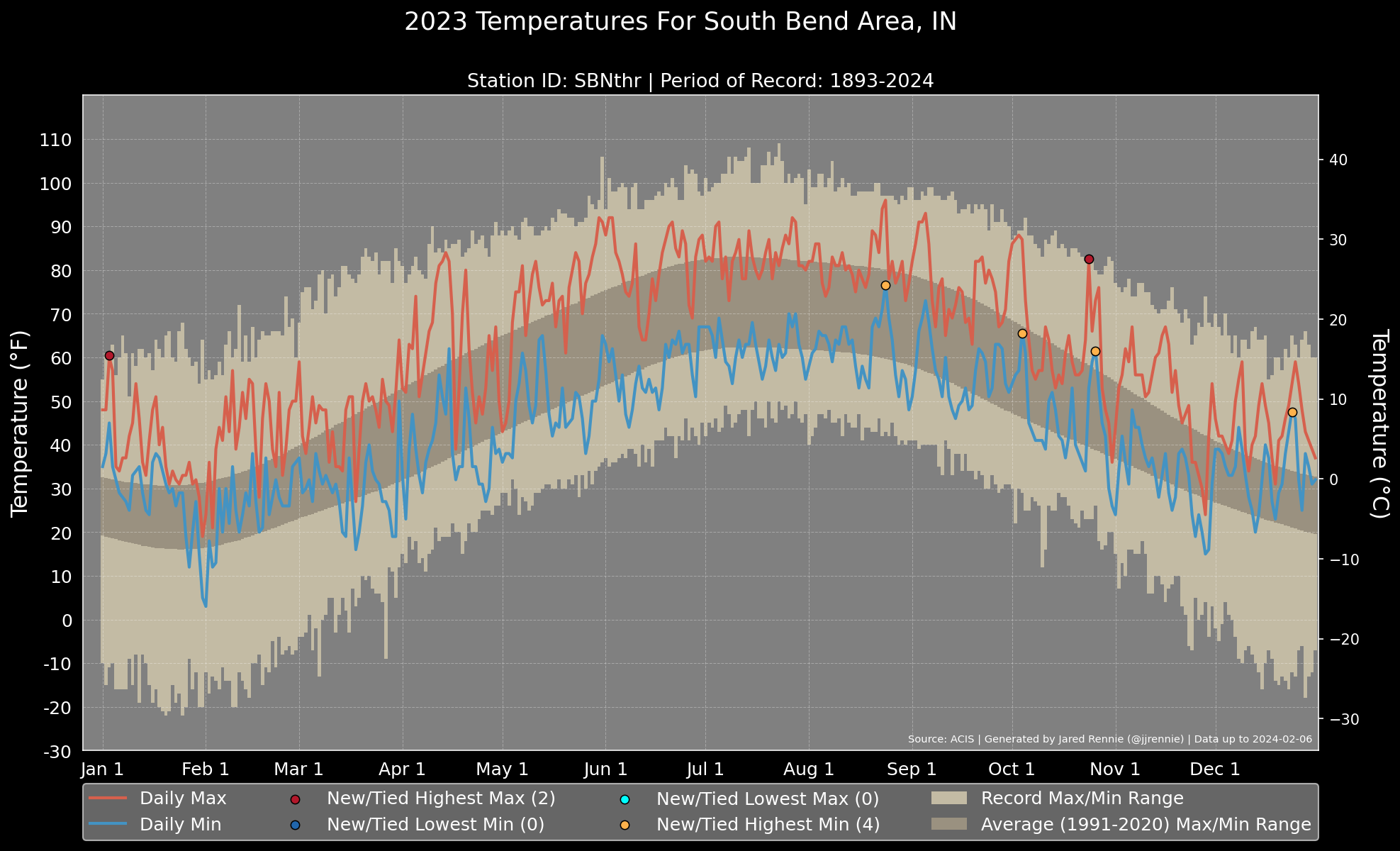Sudden Shift: A deep dive into our local data, with a climate scientist
Chief Meteorologist Tom Coomes talks with Jared Rennie, a Research Meteorologist with Climatic Science and Services Division (CSSD) at NOAA's National Centers for Environmental Information (NCEI).
Jared works with large data sets collected from all ground sensors, buoys satellites and more worldwide. Instead of looking forward he looks backwards to quantify the significance of change in weather over time, the climate record.
Below are some of the data sets Jared & Tom discuss.
Rainfall Extremes

Even with a drought, 2023 was still a year with near / above normal precipitation, after a significant spike, with head rain in late June and July.
Snow Drought

This year and even last year were not vary snowy, it's been more than five years since we had an above normal snow season.
Warming Temperatures

We set two record highs, four record warmest lows and zero record cold days in 2023. Also, a high majority of the highs and lows are at the upper reach of the 'normal' range. 2023 was the 4th warmest year on record in South Bend, and we did it less with extreme heat and more in an overall shift in temperature, upward.
Sudden Shift


There have always been warm years and colder years, but in St. Joseph County, there has been a sudden shift towards the warmest and wetter, as shown by the brighter reds and greens in recent years.
You can explore this data nationally and locally on Climate.gov and globally here.

